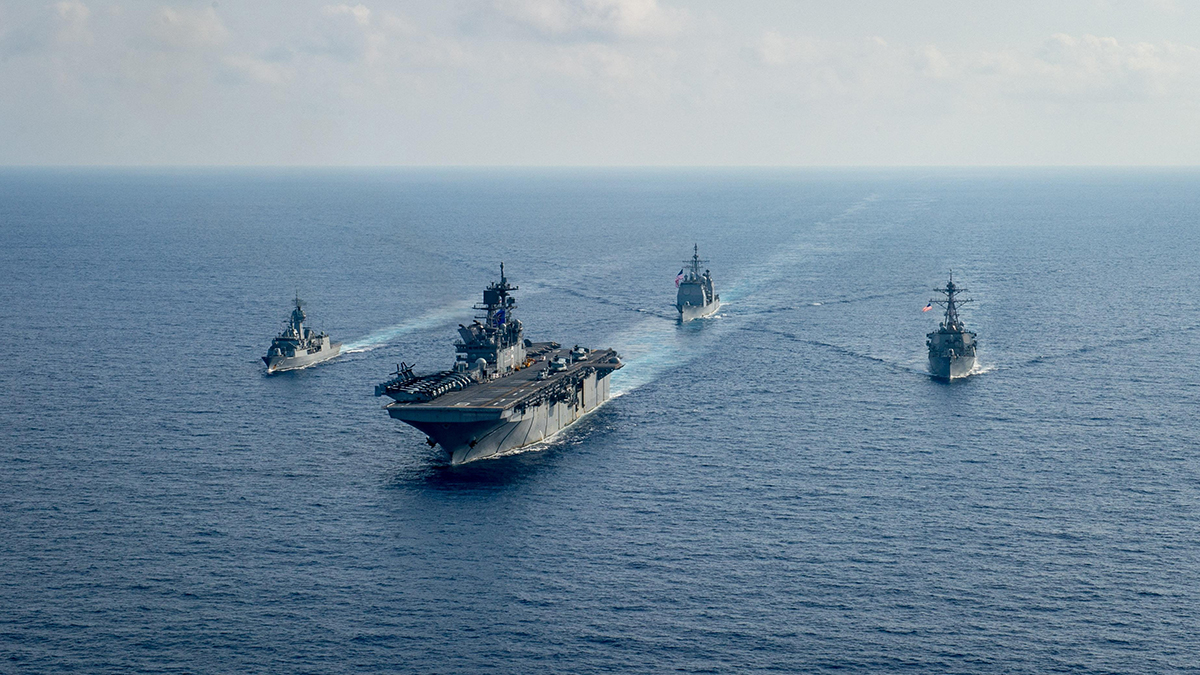Australia’s move to acquire advanced long-range missiles from the United States has provoked concern from China, the leading power in the Asia-Pacific region. The A$7 billion ($4.7 billion) agreement involves acquiring the Standard Missile 2 Block IIIC (SM-2 IIIC) and Standard Missile 6 (SM-6) systems, marking a significant upgrade in Australia’s defence capabilities. While the Australian government frames this decision as essential to strengthening its national security, it may also fuel China’s growing military posturing.
Australia’s rationale behind missile acquisition
Australia’s decision to enhance its defence systems is rooted in its broader National Defence Strategy (NDS), unveiled in April 2024. The NDS outlines Australia’s approach to national security in the context of growing strategic competition between the US and China. The acquisition of the SM-2 IIIC and SM-6 missiles is part of Australia’s plan to bolster its air and missile defence capabilities aimed at increasing deterrence and safeguarding its interests in the Indo-Pacific region.
Key objectives of the missile acquisition
Australia’s missile acquisition serves three primary objectives:
Strengthening deterrence capabilities: By integrating the advanced SM-6 missile system into its naval forces, Australia enhances its ability to target air, maritime and even ground threats at long distances. This acts as a deterrent against potential adversaries, particularly China.
Deepening US ties: Australia’s military procurement aligns with the broader US Indo-Pacific strategy showcasing its role as a key partner in countering China’s expanding influence in the region.
Safeguarding regional stability: Australia views its defence upgrade as a necessary step to maintain regional security ensuring it can effectively respond to emerging threats in an increasingly volatile geopolitical environment.
Impact Shorts
More ShortsChina’s response
China has expressed initial concern over Australia’s missile acquisition, but it does possess the wherewithal to respond through a combination of military, diplomatic and economic measures. Beijing views the missile deal as part of a broader US strategy to militarise the Asia-Pacific and contain China’s rise.
It won’t come as a surprise if China seeks to intensify its military drills and naval activities, particularly in contested areas like the South China Sea as a show of strength, signalling to both Australia and the US that China is prepared to defend its regional interests.
China may also fast-track the deployment of its own advanced missile systems along its southern coastline to maintain a strategic edge and counter the threat posed by Australia’s new weapons systems. Technological upgrades in areas like anti-ship and anti-aircraft missile systems will likely be a key component of China’s military response.
Beijing has consistently viewed Canberra’s alignment with US military interests as a destabilising force in the region. In addition to military measures, China has a history of using economic coercion to respond to political and military disagreements. Australia is familiar with this tactic, as seen after it called for an international investigation into the origins of COVID-19, prompting China to impose trade restrictions on Australian exports such as wine, coal, and barley.
Impact on regional security and stability
Australia’s missile acquisition and the expected Chinese response will have far-reaching implications for the Asia-Pacific region. An arms race between the two countries could lead to heightened instability, prompting other nations to enhance their own defence capabilities.
Countries like Japan, South Korea and India may feel compelled to expand their defence arsenals to keep pace with the growing militarisation of the region. This escalation has the potential to destabilise the Asia-Pacific increasing the risk of miscalculations and conflict.
US involvement and strategic realignment
Australia’s missile deal reinforces its status as a key US ally in the Indo-Pacific likely leading to a greater US military presence in the region. While this may enhance security for some US allies, it could provoke China to adopt a more aggressive stance. The strategic realignment of regional powers could create new fault lines, complicating efforts to maintain peace and stability in the Asia-Pacific.
While Australia seeks to enhance its defence capabilities in response to growing regional threats, its actions may provoke a stronger Chinese response, both militarily and economically. As tensions rise and regional dynamics evolve, the risk of an arms race looms large, complicating efforts to maintain stability in the Indo-Pacific. The implications of this development will reverberate across the region, shaping the future of Australia-China relations and the broader geopolitical environment.
)